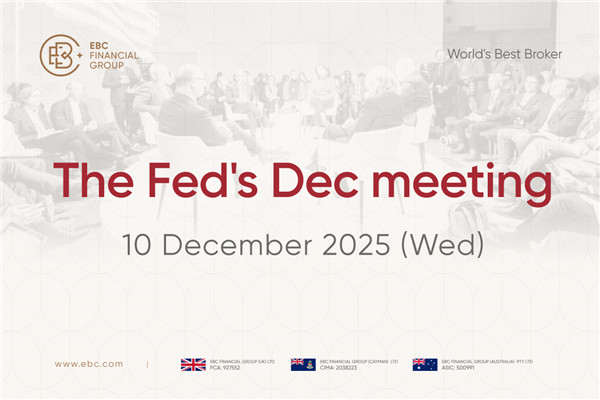A market structure shift occurs when the underlying mechanics of a market undergo a fundamental transformation, rather than a mere short-term fluctuation.
Recognising such shifts is crucial for investors and traders aiming to adjust strategies and manage risk effectively.
This article will break down the concept, highlight key drivers and identification methods, explore implications for portfolios, and outline strategic responses to navigate these structural changes.
What Is a Market Structure Shift?

A market structure shift represents a durable change in how a market operates. It often emerges through break-points in price behaviour, signalling a shift in the dominant forces controlling the market.
Unlike routine volatility or temporary pullbacks, a structure shift reflects a deeper alteration in trends, participant behaviour, or structural relationships.
Essential Market Structure Terminology
| Term |
Description |
Significance |
|
Higher High / Higher Low (HH/HL) |
Classic uptrend pattern |
Indicates dominant buyers and sustained upward momentum |
| Lower High / Lower Low (LH/LL) |
Classic downtrend pattern |
Indicates dominant sellers and sustained downward momentum |
| Market Structure Shift (MSS) |
When price breaks the previous structure (e.g., HH becomes LH) and a new regime begins |
Signals potential trend reversal or regime change, prompting strategic reassessment |
Drivers and Catalysts of Market Structure Shift
Several factors can catalyse a market structure shift, ranging from technological innovations to macroeconomic changes and internal market mechanics.
1. Technological, Regulatory, or Capital-Flow Changes
2. Macro/Regime-Level Shifts
3. Internal Market Mechanics
Large liquidity sweeps by institutional investors
Changes in the composition of active vs passive market participants
Sudden shifts in hedging behaviour or derivatives positioning
How to Identify a Market Structure Shift
Detection of a structure shift relies on technical, behavioural, and multi-timeframe analysis.
Key Technical Signals
Break of previous swing lows in an uptrend or swing highs in a downtrend
Volume and momentum confirmation through strong closing bodies rather than short-term wicks
Multi-timeframe consistency to ensure changes are visible beyond intraday noise
Key Technical Signals for Identifying Market Structure Shifts
| Signal |
What to Look For |
Caveats |
| Break of previous HL in uptrend |
Price closes below the last higher-low |
Could be a false break or range transition |
| Break of previous LH in downtrend |
Price closes above the last lower-high |
May lead to consolidation rather than full reversal |
| Shift in participant behaviour |
Moving from passive dominance to active flows or vice-versa |
Requires additional market structure context |
Implications of a Market Structure Shift
Market structure shifts have profound consequences for asset allocation, risk management, and strategic planning.
1. Asset Allocation
2. Risk Management
3. Strategy
Thematic shifts, such as moving from growth to value
Structural shifts, for instance transitioning from public equities to private markets
Case Study Example
Consider the early 2020s shift towards passive investment dominance. Many equity indices experienced lower volatility due to ETF inflows, but individual stock dispersion increased. Portfolios heavily weighted in active small-cap positions initially suffered, illustrating the need for dynamic allocation adjustments during structural transitions.
Strategic Responses and Practical Steps to Navigate Market Structure Shifts

Investors can adopt several practical measures to navigate a market structure shift effectively:
1. Conduct Regime Awareness
2. Re-evaluate Exposures
3. Adapt Strategy
4. Monitor Triggers
Track macro indicators, liquidity changes, and shifts in leadership or participation
Validate structural change through repeated confirmation signals
Practical Checklist
Identify potential break points in market structure
Verify across multiple timeframes
Assess participation flow and liquidity conditions
Reassess portfolio exposures and correlations
Consider phased strategic adjustments
Monitor ongoing confirmation signals
Risks and Limitations of Relying on a Market Structure Shift
While market structure shifts can provide an edge, there are inherent limitations:
Single breaks may not indicate a true regime change
Early recognition may lead to drawdowns
Late recognition could mean missing the primary move
Over-reliance on Technical Definitions
Must consider broader context such as macro conditions and liquidity
Historical analogues may not apply in evolving structural environments
Conclusion
Recognising a market structure shift can offer a significant advantage for investors and traders, but only when embedded within a broader strategic framework. Mechanical reliance on breakout patterns alone is insufficient.
Disciplined monitoring, multi-timeframe confirmation, and adaptive portfolio management are essential to navigate these fundamental market changes successfully.
Frequently Asked Questions (FAQ)
Q1: What is the difference between a market structure shift and a trend reversal?
A trend reversal is a directional change within an existing trend, whereas a market structure shift reflects deeper changes in regime, participant behaviour, or market mechanics.
Q2: How certain can one be that a structure shift has occurred?
Certainty is rarely absolute. Confirmation requires multiple signals, consistent patterns across timeframes, and behavioural evidence.
Q3: Should all investors reposition when a shift is identified?
Not necessarily. Actions should reflect time horizon, risk tolerance, and the degree to which the shift affects portfolio exposures.
Q4: How early is it sensible to act on a suspected shift?
Phased positioning balances the risk of acting too early or too late. Premature action may encounter residual old-regime performance; delayed action risks missing the new trend.
Q5: Can a market revert back from a structure shift?
Yes. Some shifts fail or reverse. Continuous monitoring and robust risk control measures are essential to mitigate potential reversals.
Disclaimer: This material is for general information purposes only and is not intended as (and should not be considered to be) financial, investment or other advice on which reliance should be placed. No opinion given in the material constitutes a recommendation by EBC or the author that any particular investment, security, transaction or investment strategy is suitable for any specific person.




























